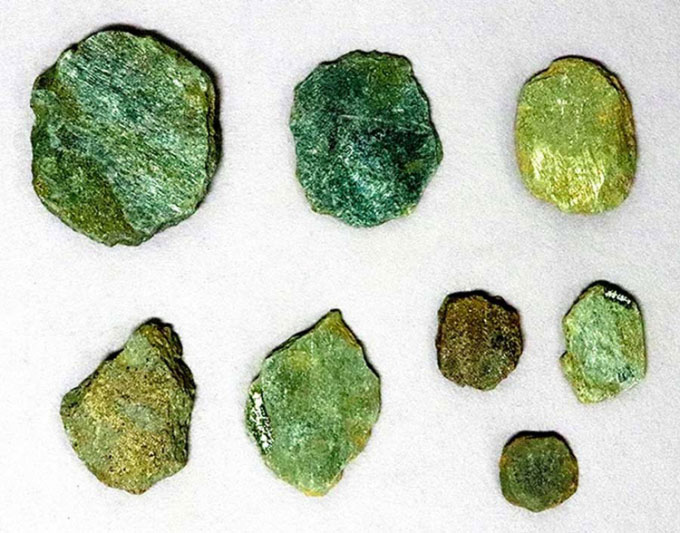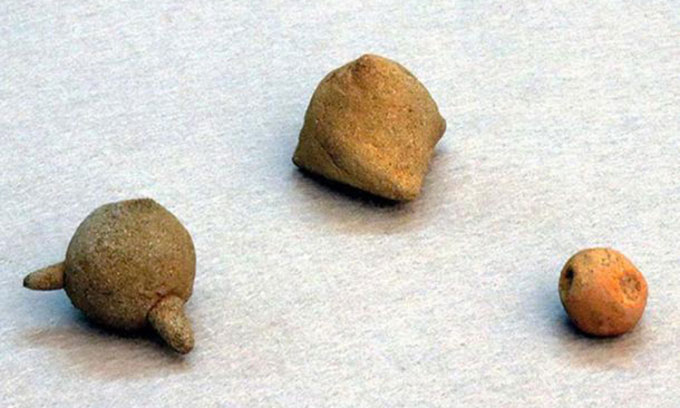Experts Discover Flat Stones with Sharp Edges and Clay Balls Likely to be Precursors of Later Ninja Weapons
Some artifacts excavated from the ruins related to the Siege of Odawara by lord Toyotomi Hideyoshi in 1590 may serve as prototypes for ninja weapons, Asahi Shimbun reported on January 14.

Flat stones with sharp edges excavated at the Owada jinya ruins in Saitama. (Photo: Ranzan History Museum, Saitama Prefecture)
According to archaeologist Akihiro Iwata, manager at the Ranzan History Museum in Saitama Prefecture, the artifacts, which include several flat stones and clay balls, could be the precursors to “shuriken” and “makibishi”, two types of weapons later used by ninjas. Iwata reached this conclusion after re-examining items from the late Sengoku period of Japan (from the late 15th century to the late 16th century) discovered at sites in Saitama and Hachioji City, west of Tokyo.
During the Siege of Odawara, a formidable force led by Hideyoshi invaded the territory of the Hojo clan, besieging and attacking Odawara Castle, the main defensive site of the Hojo clan. After the defenders at Odawara surrendered, Hideyoshi continued to besiege other nearby Hojo strongholds, including Hachioji Castle and Iwatsuki Castle, effectively ending the clan’s final resistance.
If the stones and clay balls found at the Hojo castles were indeed weapons, they were likely used by the Hojo clan to defend against Hideyoshi’s forces.

Clay balls found at the ruins of Hachioji Castle. (Photo: Ranzan History Museum, Saitama Prefecture)
The flat throwing stones with sharp angles, seemingly designed to inflict damage on enemies, were excavated from the ruins of Iwatsuki Castle and the Owada jinya headquarters, both located in Saitama, between the 1990s and 2000s. These included a hexagonal stone from the Iwatsuki Castle site with a diameter of 4.8 cm and a thickness of 1 cm, and 17 stones from the Owada jinya with diameters ranging from 8 to 14 cm and thicknesses of 1.5 to 3 cm.
Around 1960, experts also discovered four unglazed clay balls at the Hachioji Castle site. Each ball has a diameter of about 1 to 3 cm and features four protrusions resembling spikes. While these spikes are not sharp like the makibishi weapons of ninjas, their shape and placement suggest they were used for a similar purpose.
These weapons are not particularly dangerous, at least compared to the actual weapons of ninjas. This indicates that they were hastily manufactured in a state of desperation. “It is possible that the Hojo clan created these weapons upon realizing they were facing Hideyoshi’s overwhelming forces,” Iwata noted.
“Flat throwing stones may have evolved into shuriken in the years that followed. Additionally, I have never seen such clay balls before,” said ninja expert Yuji Yamada, a professor in the Humanities Department at Mie University. He described the artifacts as “a groundbreaking discovery.”


















































